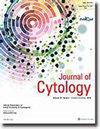Intraoperative Sentinel Lymph Node Imprint Cytology Diagnosis in Breast Cancer Patients by General Surgical Pathologists: A Single-Institution Experience of 4327 Cases
IF 1
4区 医学
Q4 MEDICAL LABORATORY TECHNOLOGY
引用次数: 0
Abstract
Context: Sentinel lymph node (SLN) biopsy is the standard of care for breast cancer (BC) patient staging. The axillary node status can be evaluated by frozen section (FS) or imprint cytology (IC). Despite the major disadvantages of tissue loss and freezing artifact in FS, many pathologists consider SLN IC a more difficult task requiring special expertise and prefer FS to IC. Aims: To conduct a large cohort study to evaluate the results of intraoperative SLN IC, compare them with those of FS and permanent section (PS), and determine the best method for general pathologists. Settings and Design: A very large cohort study with many pathologists engaged was designed and the diagnostic results were compared. Materials and Methods: With 12 pathologists engaged, we conducted the largest patient cohort study of SLN IC to date, including 4,327 consecutive BC patients undergoing SLN biopsy during the past 15 years. The touch imprints were stained using three different methods and evaluated. The PS was used as the gold standard for evaluation. Statistical Analysis: The false positivity, false negativity, accuracy, sensitivity, and specificity of the IC and FS for each pathologist were evaluated and compared. Results: Our results showed an overall sensitivity of 82.7%, specificity of 99.3%, and an accuracy rate of 95.9% for SLN IC, which were comparable to those of FS. The accuracy rate did not correlate with the length of working experience and the staining method. Conclusions: Intraoperative hematoxylin and eosin (H&E)-stained IC preparation was found to be the best SLN examination method for general pathologists.普通外科病理学家对癌症患者术中前哨淋巴结印迹细胞学诊断4327例单病经验
背景:前哨淋巴结(SLN)活检是乳腺癌(BC)患者分期的标准护理。腋窝淋巴结的状态可以通过冷冻切片(FS)或印迹细胞学(IC)来评估。尽管组织丢失和冷冻假影是FS的主要缺点,但许多病理学家认为SLN IC是一项更困难的任务,需要特殊的专业知识,并且更倾向于FS而不是IC。目的:通过大型队列研究来评估术中SLN IC的结果,并将其与FS和永久切片(PS)的结果进行比较,并确定一般病理学家的最佳方法。环境和设计:设计了一项有许多病理学家参与的大型队列研究,并比较了诊断结果。材料和方法:有12名病理学家参与,我们进行了迄今为止最大的SLN IC患者队列研究,包括在过去15年中连续4327例接受SLN活检的BC患者。用三种不同的方法对触摸印迹进行染色并进行评价。PS作为评价的金标准。统计分析:对每位病理学家的IC和FS的假阳性、假阴性、准确性、敏感性和特异性进行评估和比较。结果:SLN IC的总体敏感性为82.7%,特异性为99.3%,准确率为95.9%,与FS相当。准确率与工作经验长短和染色方法无关。结论:术中苏木精伊红(H&E)染色IC制剂是普通病理学家最好的SLN检查方法。
本文章由计算机程序翻译,如有差异,请以英文原文为准。
求助全文
约1分钟内获得全文
求助全文
来源期刊

Journal of Cytology
MEDICAL LABORATORY TECHNOLOGY-
CiteScore
1.80
自引率
7.70%
发文量
34
审稿时长
46 weeks
期刊介绍:
The Journal of Cytology is the official Quarterly publication of the Indian Academy of Cytologists. It is in the 25th year of publication in the year 2008. The journal covers all aspects of diagnostic cytology, including fine needle aspiration cytology, gynecological and non-gynecological cytology. Articles on ancillary techniques, like cytochemistry, immunocytochemistry, electron microscopy, molecular cytopathology, as applied to cytological material are also welcome. The journal gives preference to clinically oriented studies over experimental and animal studies. The Journal would publish peer-reviewed original research papers, case reports, systematic reviews, meta-analysis, and debates.
 求助内容:
求助内容: 应助结果提醒方式:
应助结果提醒方式:


